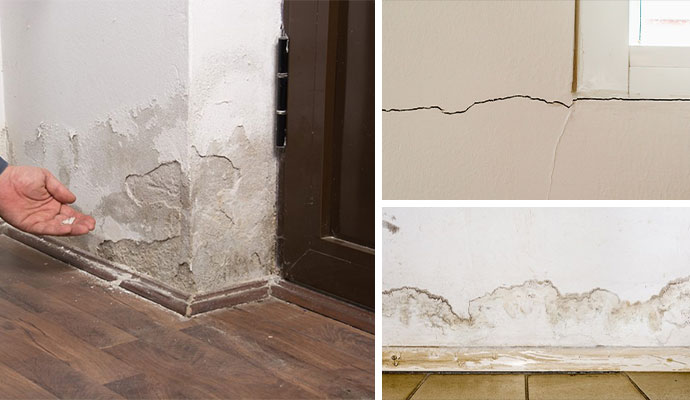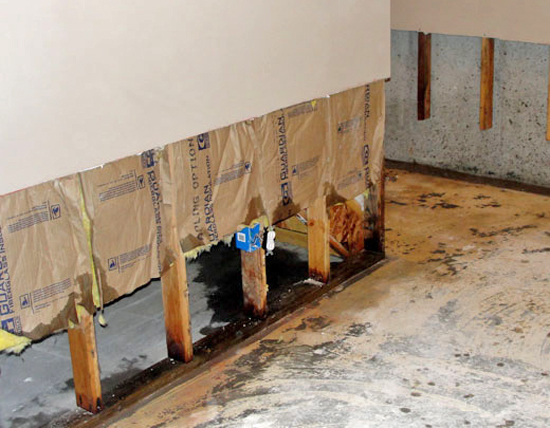From Detection To Correction - Managing Water Stains On Your Walls
From Detection To Correction - Managing Water Stains On Your Walls
Blog Article
How do you really feel with regards to How to Remove Water Stains from Walls and Ceilings?

Water discolorations on walls are not pleasurable to the eyes. Your residence should lack discolorations on the walls, roofing, or floorings. That is the perfect state of a house and also its structures. In some cases it appears virtually unavoidable to experience water spots on wall surfaces in homes.
House owners living in moist areas constantly deal with the worry of water spots on wall surfaces. With well-shaped and also accurate info on the reasons of water discolorations and also punctual repair processes, you will always be an action ahead of such occurrences.
3 Typical Root Causes Of Water Discolorations on Walls
As opposed to popular belief, water spots on wall surfaces do not constantly originate from inadequate structure materials. There are several reasons for water spots on wall surfaces. These consist of:
Poor Water drainage
When making a building plan, it is critical to make certain sufficient drain. This will certainly avoid water from leaking into the walls. Where the drain system is clogged or missing, below ground dampness builds up. This links to extreme dampness that you see on the walls of your building.
So, the leading reason for wet walls, in this case, can be an inadequate drain system. It can also be due to poor management of sewage pipelines that run through the building.
Damp
When hot wet air meets completely dry cool air, it triggers water droplets to form on the walls of structures. When there is heavy steam from cooking or showers, this takes place in cooking areas as well as restrooms. The water beads can discolor the bordering walls in these parts of your house and infect various other areas.
Wet or condensation impacts the roofing and walls of buildings. This creates them to appear darker than various other areas of the house. When the wall surface is wet, it creates an ideal atmosphere for the development of fungis and microorganisms. These might have adverse impacts on health, such as allergic reactions and also breathing problems.
Pipeline Leaks
The majority of houses have a network of water pipelines within the walls. It constantly enhances the viability of such pipes, as there is little oxygen within the wall surfaces.
A drawback to this is that water leak affects the wall surfaces of the building as well as triggers prevalent damage. An indicator of damaged pipes is the appearance of a water tarnish on the wall.
Water Spots on Wall Surface: Repair Work Tips
When dealing with water discolorations, homeowners would normally desire a quick fix. They would certainly soon realize this is counterproductive as the water stains recur. So, right here are a couple of valuable suggestions that will assist you in the repair service of water discolorations on wall surfaces:
Pro Suggestion
A houseplant in your home also enhances its humidity. So, if your home is already humid, you might intend to present houseplants with marginal transpiration. An example of suitable houseplants is succulents.
Conclusion
No one wants to have water stains on walls in their residence, it can occur to the finest of us. This short article gives you leverage, as you currently recognize exactly how to handle this mishap if it does take place.
It is constantly best to hire expert services to help deal with the problems in your home.
In some cases it appears nearly inescapable to experience water stains on walls in residences.
In contrast to prominent belief, water discolorations on wall surfaces do not always stem from poor structure products. There are a number of causes of water discolorations on wall surfaces. The water droplets can stain the bordering walls in these components of your house as well as spread to various other locations.
Here are a couple of valuable tips that will certainly assist you in the repair work of water discolorations on walls:
CHECKING FOR WATER DAMAGE
Water damage can be costly, and it may begin before you even notice the first signs of trouble. Water damage can cause mold and mildew in your walls and floors, which can create an abundance of health concerns for your family. It can also lead to costly repairs of various appliances and general home fixtures. To avoid the pricey consequences of water damage, here are Warner Service’s top 5 places you should check:
The walls – The easiest place to spot the beginnings of water damage is on the walls and ceilings of your home. If water damage is present, there will most likely be water stains, especially around the windows and doorframes, and/or cracks in the drywall. If a stain looks unusual (discolored to brown, black or gray, raised texture), has a swollen appearance or is soft to the touch, contact a professional immediately. The pipes – To avoid water damage, consistently check the pipes in your kitchen (especially the dishwasher and ice maker), bathrooms, laundry room (specifically washing machines) and basement for corrosion, leaks and water stains. Pay special attention to where the pipes connect in your home and the location of caulking around the bathroom fixtures, including toilets, sinks, showers and tubs. Missing or loose caulking and grout could be signs of leaking water. This seepage can also quickly cause mold and rust, so double check your water heater and tank for wet spots on the floor. The floor – Water damage is very easy to spot on the floor. Look for any warping or buckling of the material, especially in the basement. If your home has wood flooring, look for bright white or dark stains. If your home has carpeting, keep it dry and clean. A damp carpet that smells of mold could cause water damage and health problems. To avoid this, consider installing floor pans under your appliances to help prevent damages from small, slow and undetected leaks. The basement and attic – If your basement or attic smells odd check for mold and mildew around the area, especially the valley where the roof meets. While you are inspecting those areas, check for wall cracks, floor stains, rust and dampness in the insulation. If you live in a colder and/or rainier climate, perform routine checks for water damage from melting snow or ice and rain. The exterior – Check the roof for damaged flashing and missing, cracked or curled shingles. There should also be no standing water anywhere outside your home. This could be caused by puddles, leaky rain gutters or hoses, poor drainage, or short gutter spouts. Invest in a sump pump system or water flow monitoring system, and perform routine maintenance on these outdoor appliances to avoid indoor water damage.

I'm just very curious about Indicators of Water Damage Behind Walls and I'm hoping you enjoyed my piece. If you please set aside a second to promote this write-up if you enjoyed it. Thank you for going through it.
Source This Article
Report this page